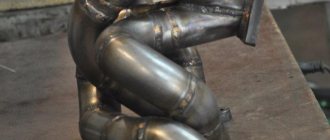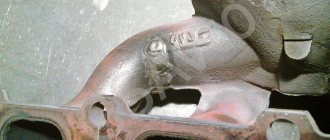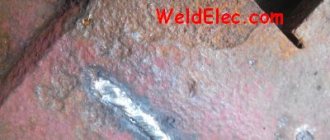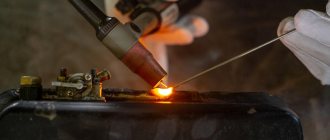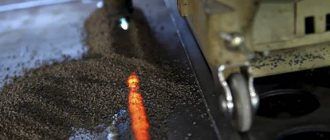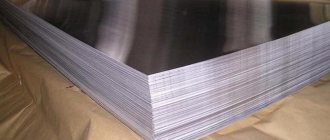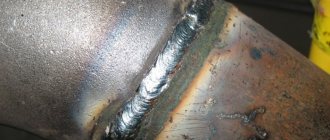One of the components of the internal combustion engine is the exhaust manifold. It wears out during use. This is typical for a car with any mileage. There are many reasons for the formation of cracks: from manufacturing defects, incorrect assembly to dynamic destruction. If a part fails, do not rush to replace the spare part. Many car repair shops specialize in welding exhaust manifolds. Having a welding machine in the garage, you can restore the part yourself. This can be done in several ways. The collector is made of stainless pipes or cast iron. Both alloys can be welded, but each technology has its own nuances. Experts are ready to share their experience.
Exhaust manifold: causes of failure and maintenance
Depending on the make of the car and the type of engine, models of various modifications are installed on the engine. They can be divided into two groups:
- all-metal, they are usually made by casting iron;
- tubular, for their production stainless pipes of various diameters are used.
The manifolds are attached to the internal combustion engine block using flanges. At each stroke, exhaust gases enter the chamber under pressure. Their temperature reaches 900 degrees. It is clear that a part operating in this mode can break.
A leak in the exhaust manifold is the most difficult defect. Possible situations:
- one of the pipes burns out;
- cracks appear on the collector due to dynamic load;
- The pipe breaks off completely.
Exhaust manifold crack
All this damage is a problem. For many cars, the procedure for replacing a part drags on for months - “original” spare parts sometimes have to be ordered.
Many service stations restore them. Welding of collectors, depending on their modification, is carried out using hot, cold or argon welding methods. The work is carried out using different types of equipment, using electrodes or filler wire. Restoration can be done in the courtyard or garage. How to weld the exhaust manifold yourself? Let's consider each of the methods in detail.
Features of the work
If a crack is found on the manifold, then you need to weld it immediately, without waiting for it to lead to a break in the pipe . In this case, it is necessary to take into account what material the product is made of, for example, cast iron differs from other materials in that during welding work it is necessary to increase the presence of carbon within 2-6%.
Seam connection
Welding a cast iron manifold requires high qualifications from the performer; it is carried out with heating of the part or using a cold method, for each it is necessary to select the appropriate electrodes.
When heating, it is necessary to constantly maintain the temperature of the product, since cast iron cools quickly . It is necessary to drill holes on both sides of the crack to prevent it from spreading when heated.
Thoroughly cut the crack so that the new metal fills it completely, and clean the adjacent area. The welding process is accompanied by a large release of CO2, as carbon burns out, so it is necessary to organize a powerful exhaust hood. Excessive vaporization deteriorates the quality of the seam. After welding is completed, heating of the part continues so that the cast iron cools slowly and a layer of white coating cannot form on the surface of the weld, which cannot be processed.
Types of cast iron welding
In industry, there are three methods of welding cast iron:
- Hot - the workpiece is heated to 600-650 °C.
- Semi-hot , when the metal heats up no higher than 300-350 °C.
- Cold option - the part is not heated.
The third option differs in that the seam is welded in short sections, followed by a second layer to avoid warping.
Gas
Gas welding of cast iron parts gives good results in terms of quality and strength of the seam , while excessive carbon burnout is prevented, and the technique also allows for preliminary and subsequent heating of the product for slow cooling.
Using a semi-automatic machine
The technique is simple, the main thing for the performer is to know the welding procedure and prepare the part in advance; the strength and quality of the seam joint depends on the second action. Wire of a special composition is used as an additive.
Argon
Using argon as a shielding gas when welding semi-automatically is quite expensive; the best option is TIG welding of cast iron structures using a non-consumable tungsten electrode in a shielding gas environment.
Using an inverter
Similar welding requires a large amount of preliminary work, taking into account the following recommendations:
- the welding area is cleaned to a shine with a flap wheel;
- then thoroughly degrease the surface with B-70 gasoline or another solvent;
- deepen the crack by making a cone-shaped joint.
With an inverter, welding is performed layer by layer, and steel studs are used as supporting elements.
Welding a cast iron exhaust manifold
Temperature processing of a high-carbon alloy is associated with certain difficulties:
- carbon burns out when exposed to heat, the metal becomes friable;
- Cast iron has a high fluidity coefficient;
- upon rapid cooling, due to internal stress, the casting begins to crack and becomes whitish, this indicates a change in the structure of the alloy.
Welding a cast iron exhaust manifold can be done by trainees. It is better for beginners not to undertake the restoration of a car engine part, or they should first practice on junk cast iron products. Until recently, welders did not undertake repairs to cast iron. The seam turned out to have a high content of scale, and the metal cracked in the heating zone. After the advent of special copper-containing electrodes, which made it possible to reduce the temperature in the melt bath to +120°C, it became possible to create strong connections.
Hot and semi-hot methods are not fundamentally different. The crack is welded with copper-containing additives when the part is preheated. When hot, the part is heated in the oven to a temperature of +600°C, a crimson tint appears. It is noticeable when shaded. After this, welding begins. To prevent the part from cooling down quickly, it is periodically heated with a blowtorch. With the semi-hot method, the part is heated within +300°C. The result is an even seam. It is very important to maintain the temperature during cooling. If the crack depth is large, it:
- pre-cut to the full depth;
- the edges are drilled out on both sides;
- the edges are smoothed at an angle of 30°.
They make a multilayer connection. Each seam must be forged, the penetration length is no more than 3 cm. The seams are made perpendicular to ensure a reliable connection. For electric arc welding, electrodes of the TsCh-4 brand are used.
The cold method does not require preliminary preparation. The crack is fused at temperatures up to 200°C. For work, special electrodes OZCH-6, OZCH-2 are used.
The fracture strength of a cold joint is lower. For critical connections (when the outlet manifold pipe is completely broken off), it is better to take MNCh-2 electrodes. When semi-automatic gas welding, copper filler wire is used.
general information
Regardless of the vehicle, it can be equipped with a tubular or solid manifold. The one-piece unit is cast from cast iron and has no seams. It is the most durable and durable. Tubular is made by welding several pipes into a single system. This option is less reliable, but more repairable, since it is often the seams that burst and can be re-fused without any problems.
The collectors themselves are made of cast iron, heat-resistant steel or aluminum. The unit is cooled using air, but sometimes this is not enough. In critical situations, the collector becomes severely overheated or overcooled, seams burst, cracks or other visible defects form.
Cracks can be caused by engine malfunctions, improper operation of the catalyst, careless driving through puddles and slush, improper engine washing, aggressive driving, and much more. Sometimes frequent breakdowns are associated with manufacturing defects or the manufacturer’s desire to shorten the life of the car. Modern automakers do not prioritize the quality of their cars, often making components from low-quality metal or making mistakes during assembly. Welding of the collector is necessary if the cracks have reached a length of 5 centimeters or more, if fragments of the collector have burned out, the collector itself has split into several components, or the seams have burst.
Cold welding when repairing the exhaust manifold
Small defects are repaired using special adhesives called “cold welding”. Before applying the mixture, the area to be repaired must be degreased. Adhesives should be used strictly according to the instructions. Then the result is a patch whose physical properties are similar to metal. This method is convenient for eliminating cracks and burnouts in hard-to-reach places. Glue is only a temporary measure to fix the damage. Under heavy loads of hot gases leaving the cylinders, the patched components will not last long. The adhesive composition is not designed for dynamic loads, but it can withstand static loads very well. Before purchasing glue, it is important to study its characteristics.
Intake manifold
The tightness of the intake system is very important for the proper operation of the engine.
The tightness of the intake system is very important for the proper operation of the engine.
Oil traces at the manifold joints are visible to the naked eye, and air leaks can be calculated using a simple technique. While the engine is running, spray any suspicious areas with brake system or carburetor cleaner. If after some time the engine speed “floats” or it begins to choke altogether, then there is a significant suction in these places. The cleaner, as a flammable substance, entering the intake, enriches the air-fuel mixture, which causes the engine speed to fluctuate.
The intake of additional air, not taken into account by the sensors on the intake side, causes a constant leaning of the mixture. The control system tries to adjust the fuel supply based on the output readings of the front lambda probe. As a result, we have the notorious engine trim at idle speed.
Check Engine
Often, a decent amount of air leaking through the joints of the intake pipe even causes the Check Engine indication to appear.
The corresponding error code will indicate that the air-fuel mixture is too lean. Other culprits for this problem are worn gaskets at the junction of the pipeline and the cylinder head. Often, a decent amount of air leaking through the joints of the intake pipe even causes the Check Engine indication to appear. The corresponding error code will indicate that the air-fuel mixture is too lean. Other culprits for this problem are worn gaskets at the junction of the pipeline and the cylinder head.
silicone sealant
Universal silicone sealant.
Most of these tubes are equipped with a convenient nozzle. By cutting off part of the spout, you can select the desired diameter of the hole so that the sealant fits well into the joints. Universal silicone sealant. Most of these tubes are equipped with a convenient nozzle. By cutting off part of the spout, you can select the desired diameter of the hole so that the sealant fits well into the joints.
Lada Kalina 2 from ZR park
Lada Kalina 2 from the ZR park
Lada Kalina 2 from the ZR park
Are there any volunteers?
Armed with theory, we will repair the intake system on the editorial Kalina. The composite plastic path of the 1.6 naturally aspirated gasoline engine (106 hp) leaks around the perimeter of the wells for the ignition coils. Apparently, these are the consequences of frequent tests on the Smolensk Ring race track, in which the car and especially its engine were driven to the limit of their capabilities.
Intake manifold
It turned out not very aesthetically pleasing.
It's good that these places are not in plain sight. It turned out not very aesthetically pleasing. It's good that these places are not in plain sight.
The restoration work took about an hour. For good access to the repair areas, it was necessary to remove the individual ignition coils. The sealant and a bottle of cleaner cost 300 rubles. The repeated test for air leaks after the seal had dried was successful - the speed stopped floating!
Restoring the tightness of the intake system on the editorial Kalina
Intake manifold
After local cleaning, it became clear why these places are the most “snotty” - an indecently large gap.
After local cleaning, it became clear why these places are the most “snotty” - an indecently large gap.
Due to the large area of joints that require sealing, the option of plastic welding is immediately rejected - it is too expensive. You may be puzzled by sealing the cracks yourself using a soldering iron. But, since we have a low-volume naturally aspirated engine, it is quite enough to apply sealant along the joints.
Before carrying out work, we check whether air is being sucked in problem areas. As it turns out, the gaps were so large that pouring brake cleaner on caused the engine to convulse!
